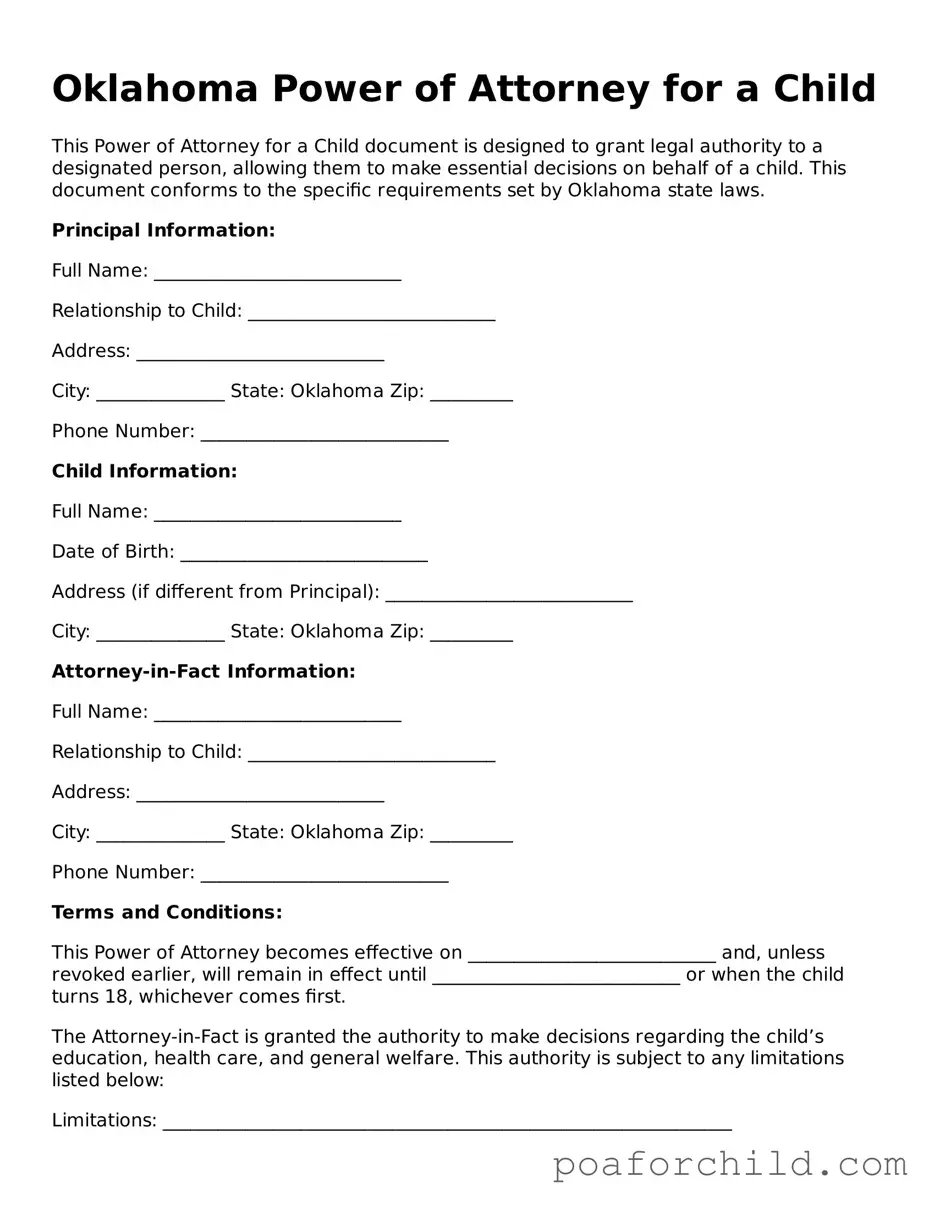Detailed Guide for Using Oklahoma Power of Attorney for a Child
Filling out a Power of Attorney for a Child in Oklahoma is an important step in ensuring a trusted adult can make vital decisions on behalf of a child. This might include decisions about education, health care, and other day-to-day activities. It's a process that gives peace of mind to parents or guardians, knowing that their child's needs will continue to be met in their absence. While the thought of delegating parental responsibilities can feel overwhelming, the process itself is straightforward if the steps are followed carefully.
To properly complete the Oklahoma Power of Attorney for a Child form, follow these steps:
- Gather all necessary information about the child, the parent(s) or current legal guardian(s), and the person(s) being granted power of attorney. This includes full names, addresses, and contact information.
- Download the latest version of the Oklahoma Power of Attorney for a Child form from an official or reputable source to ensure it's current.
- Begin by entering the date on which the document is being filled out at the top of the form.
- Fill in the child’s full name and date of birth in the designated spaces.
- In the sections provided, write the full names and addresses of the parent(s) or legal guardian(s) giving the power of attorney, as well as the person(s) receiving it.
- Specify the powers being granted under this document. This may include making educational decisions, authorizing medical treatment, and other parental responsibilities.
- Include the duration of the power of attorney. Unless otherwise specified, this document typically lasts for one year from the date of signing.
- Review the completed form to ensure all information is accurate and no sections have been missed.
- Have the form notarized. This usually requires signing the form in front of a notary public along with the person(s) receiving the power of attorney.
- Make copies of the notarized document. Provide one to the person(s) granted power of attorney, keep another for your records, and consider providing a copy to the child’s school or healthcare provider if necessary.
After these steps have been completed, the document is now in effect. It acts as a legal agreement, authorizing the designated individual(s) to make decisions for the child within the scope outlined in the document. It's a responsible step to take when preparing for situations where you may not be able to be present to make decisions for your child. If circumstances change or if the document needs to be revoked for any reason, it’s important to consult with a legal professional to understand the process and ensure that the child’s best interests are always the priority.
